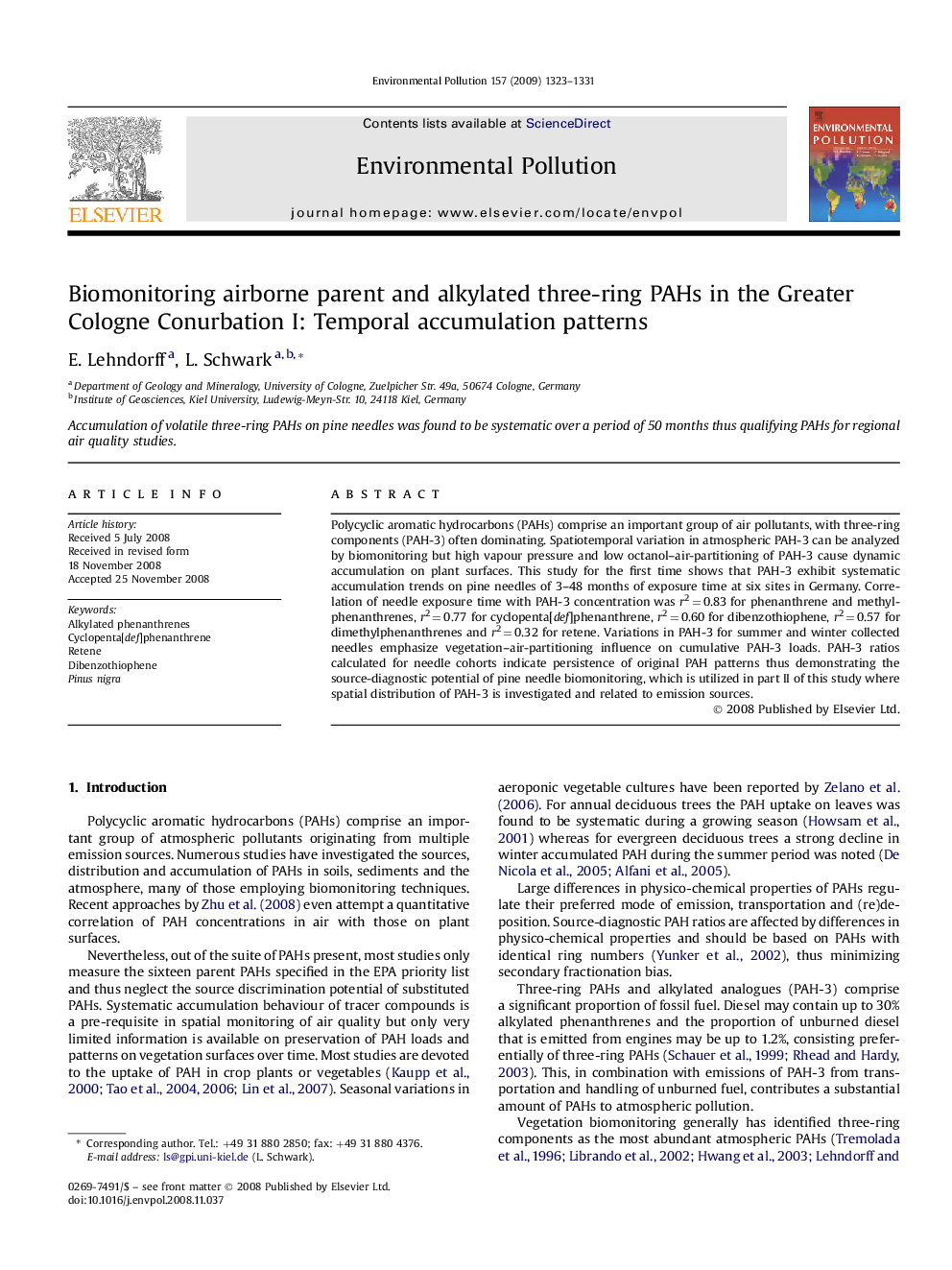| Article ID | Journal | Published Year | Pages | File Type |
|---|---|---|---|---|
| 4426541 | Environmental Pollution | 2009 | 9 Pages |
Polycyclic aromatic hydrocarbons (PAHs) comprise an important group of air pollutants, with three-ring components (PAH-3) often dominating. Spatiotemporal variation in atmospheric PAH-3 can be analyzed by biomonitoring but high vapour pressure and low octanol–air-partitioning of PAH-3 cause dynamic accumulation on plant surfaces. This study for the first time shows that PAH-3 exhibit systematic accumulation trends on pine needles of 3–48 months of exposure time at six sites in Germany. Correlation of needle exposure time with PAH-3 concentration was r2 = 0.83 for phenanthrene and methylphenanthrenes, r2 = 0.77 for cyclopenta[def]phenanthrene, r2 = 0.60 for dibenzothiophene, r2 = 0.57 for dimethylphenanthrenes and r2 = 0.32 for retene. Variations in PAH-3 for summer and winter collected needles emphasize vegetation–air-partitioning influence on cumulative PAH-3 loads. PAH-3 ratios calculated for needle cohorts indicate persistence of original PAH patterns thus demonstrating the source-diagnostic potential of pine needle biomonitoring, which is utilized in part II of this study where spatial distribution of PAH-3 is investigated and related to emission sources.
